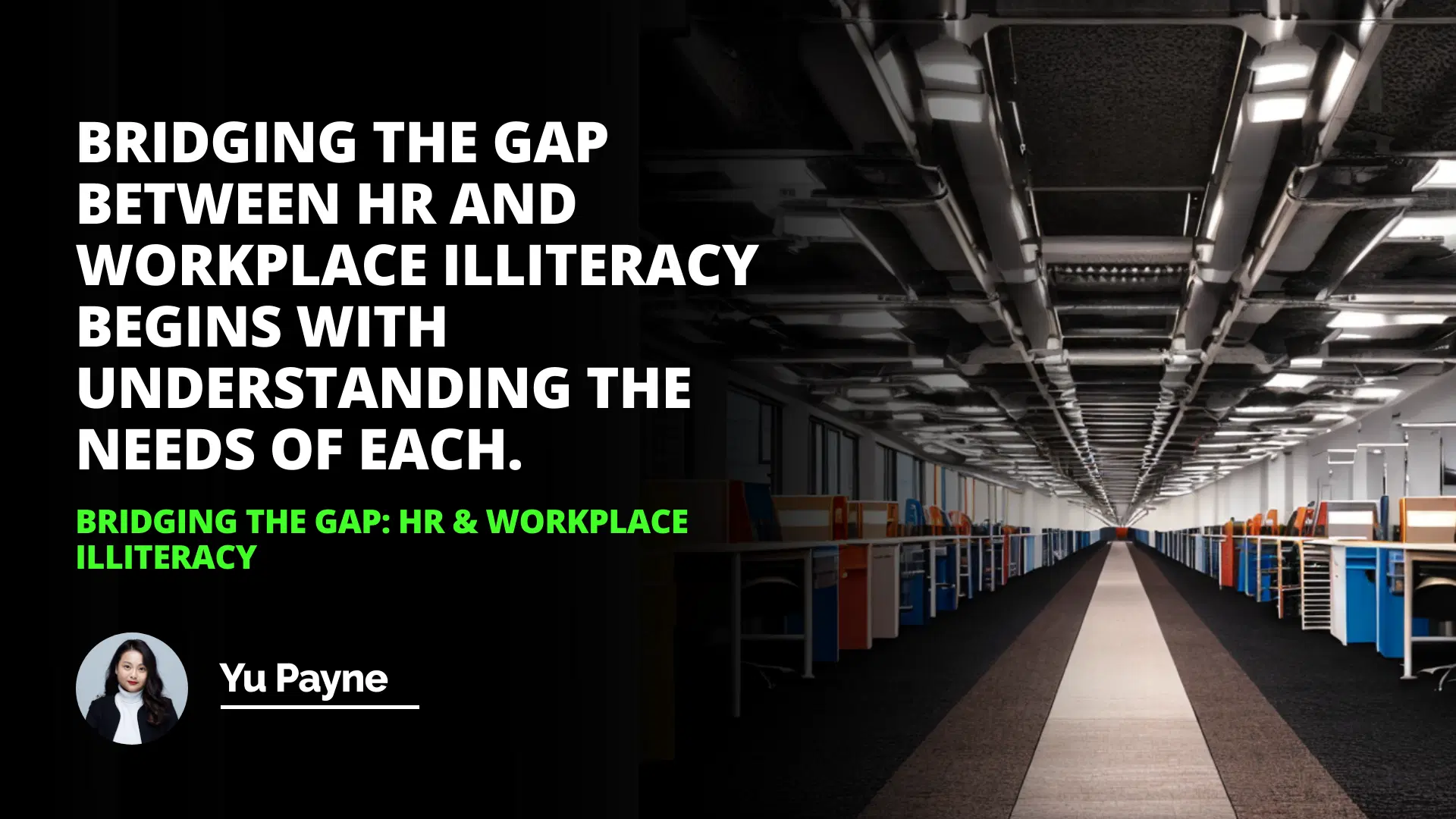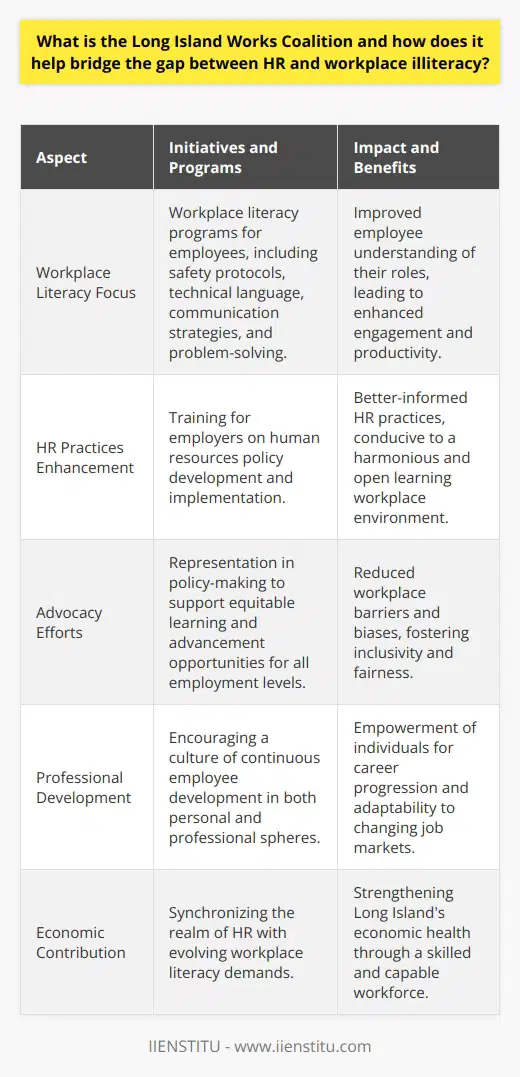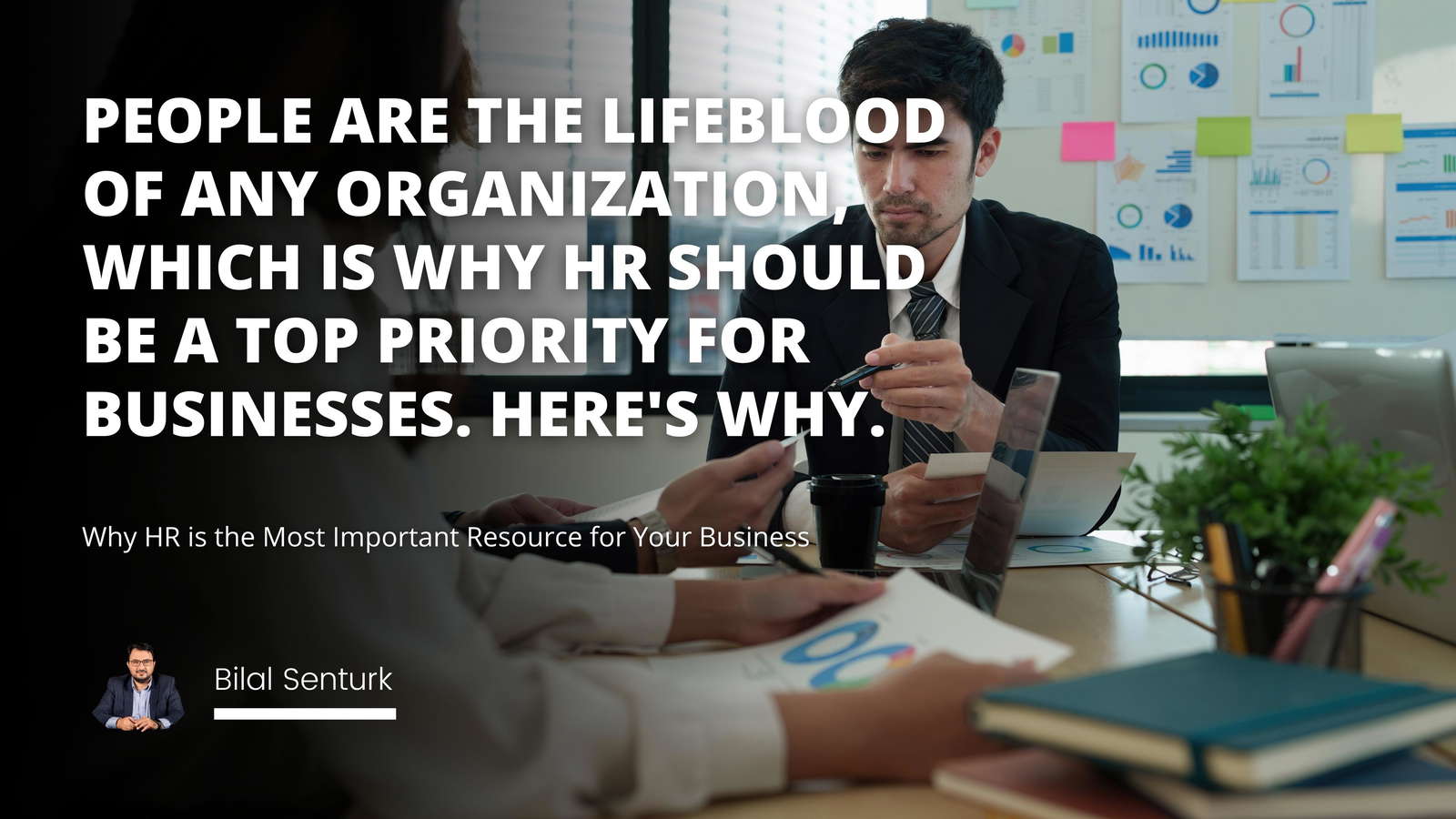
It was a chilly morning when I first met Carlos, a new hire at our manufacturing plant. He wore a nervous smile, and I noticed he was hesitant to fill out the onboarding forms. As an HR manager, I've met countless employees, but there was something different about Carlos. After a bit of chatting, it became clear: Carlos was struggling with reading the basic instructions. This wasn't just a language barrier; it was a literacy issue. That moment was an eye-opener for me, highlighting a problem that's more widespread than many of us realize.
Workplace illiteracy isn't just about individuals unable to read or write; it's a silent productivity killer affecting businesses across the United States. You might be surprised to learn that the Department of Labor reports 2.5 million illiterate Americans entering the workforce each year. Even more startling is the U.S. Department of Education's finding that one in every seven American adults is functionally illiterate. That's a significant portion of our population struggling with daily tasks that many of us take for granted.
Introduction
Overview of Workplace Illiteracy
Impact of Illiteracy on Business
Bridging the Gap
Long Island Works Coalition
The Hidden Costs of Illiteracy on Businesses
When we think about business losses, we often consider factors like market downturns or competition. But have you ever thought about how illiteracy impacts the bottom line? Studies indicate that illiteracy costs businesses billions of dollars in profits each year. Lowered productivity isn't just a theoretical concept; it's a reality when employees can't comprehend safety manuals, follow written instructions, or understand company policies.
Imagine a scenario where an employee misreads a safety protocol, leading to an accident. Not only is there a human cost, but the financial repercussions can be immense. Declining international competitiveness is another consequence. In a global market, companies need a skilled workforce to innovate and stay ahead. Reduced promotability means that talented individuals stagnate in positions because they lack the literacy skills to advance.
The Role of Human Resources HR in Addressing the Issue
As HR professionals, we are the bridge between management and employees. It's our responsibility to recognize and address workplace illiteracy. But where do we start? Human resources resources are plentiful, but utilizing them effectively is key. By implementing literacy programs and providing support, we can empower our workforce.
In my experience, open communication is vital. When employees feel safe discussing their challenges, human and resources can work together to find solutions. After all, our goal is to foster an environment where everyone has the opportunity to succeed.
Here are some steps HR can take:
1- Assess the literacy levels of the workforce discreetly.
2- Develop training programs tailored to employees' needs.
3- Partner with educational institutions to provide resources.
4- Promote a culture of continuous learning within the company.
Bridging the Gap Between Employers and Education
Understanding the problem is one thing, but taking action is another. Resourceful HR management can lead the charge in bridging the gap between the workforce and educational opportunities. This is where partnerships come into play.
The Long Island Works Coalition: A Success Story
I recall attending a seminar where I learned about the Long Island Works Coalition, a not-for-profit membership organization in New York. They focus on bridging gaps and enhancing working relationships between employers and educators. The Coalition recognizes that businesses need employees who are not just skilled but also literate.
They've implemented programs that connect employers with schools and colleges, ensuring that the future workforce is better prepared. For instance, they've set up internships and mentoring programs that give students real-world experience while still in school. The result? A pipeline of literate, skilled workers ready to contribute from day one.
Minneapolis Regional Chamber of Commerce: Educating for the Future
Similarly, the Minneapolis Regional Chamber of Commerce has taken proactive steps. They've partnered with local businesses to develop and implement workplace literacy programs. By assessing the specific needs of employers, they've been able to create customized training that directly addresses gaps in literacy.
One program that stood out involved collaborating with a local community college to offer evening classes for employees. This initiative not only improved literacy rates but also boosted employee morale. Workers felt valued and invested in, leading to increased productivity and employee connectivity within the company.
The Benefits of Work/School Partnerships
The advantages of these partnerships are manifold:
Increased Productivity: Literate employees can perform tasks more efficiently, reducing errors.
Improved Morale: Employees who receive support feel more valued.
Enhanced Competitiveness: A skilled workforce propels the company ahead in the global market.
Talent Retention: Investing in employees encourages loyalty, reducing turnover rates.
Community Development: These programs often uplift the broader community, fostering goodwill.
Strategies for HR Management to Combat Workplace Illiteracy
As HR professionals, how can we replicate these successes? Here's a roadmap:
Bridging the gap between HR and workplace illiteracy begins with understanding the needs of each.

1- Identify the Problem Areas: Use surveys and performance metrics to pinpoint where literacy issues are impacting the business.
2- Engage Employees: Create a safe space for employees to voice their challenges without fear of stigma.
3- Develop Customized Training Programs: One size doesn't fit all. Tailor programs to meet specific needs.
4- Leverage External Resources: Partner with local educational institutions, nonprofits, and government agencies.
5- Utilize Technology: Implement e-learning platforms that allow employees to learn at their own pace.
Reassignment Request Letter Tips and Information
Occasionally, an employee might feel they're in a role that doesn't match their capabilities due to literacy challenges. In such cases, understanding how to write a reassignment request letter can be invaluable. Providing tips and information on this process empowers employees to seek positions where they can excel while they work on improving their skills.
For example:
Be Honest: Encourage employees to express their reasons transparently.
Highlight Strengths: They should emphasize the skills they bring to the new role.
Express Willingness to Learn: Demonstrating a commitment to personal development can make a positive impression.
The Human Element in Human Resources
At the heart of HR is the word "human." Our role isn't just about policies and procedures; it's about people. Recognizing the struggles that employees face and providing resources human resources can offer makes all the difference. We can't forget that behind every employee ID is a person with dreams, challenges, and potential.
Employee Connectivity: Building a Supportive Environment
Employee connectivity isn't just about social events or team-building exercises. It's about creating a network of support where employees feel connected to the company's mission and to each other. By fostering such an environment, we not only tackle issues like illiteracy but also build a stronger, more cohesive team.
The Bigger Picture: Why It Matters
Addressing workplace illiteracy isn't just a corporate responsibility; it's a societal one. When businesses step up to the plate, they contribute to solving a larger problem. Resources HR departments allocate towards literacy programs have a ripple effect, benefiting families and communities.
Management HR: Leading the Change
Leadership plays a pivotal role. Management HR must prioritize literacy by allocating budgets, setting policies, and leading by example. When upper management demonstrates commitment, it sends a powerful message throughout the organization.
Consider these management actions:
Allocating Funds: Budgeting for literacy programs shows tangible commitment.
Policy Development: Implement policies that support ongoing education.
Recognition Programs: Acknowledge and reward employees who make strides in improving their skills.
Personal Reflections and Moving Forward
Thinking back to Carlos, I remember how our company decided to act. We partnered with a local adult education center and offered on-site literacy classes. Carlos wasn't alone; several employees joined the program. Over time, we saw improvements not just in their work but in their confidence. It was a reaffirmation that investing in our employees was the right choice.
Human Rec: A New Perspective
Some might refer to HR as human rec, short for human resources. But perhaps it's time we see it as "human recognition." Recognizing the humanity in our workforce and the struggles they face brings us closer to solving issues like workplace illiteracy.
Conclusion
Workplace illiteracy is a challenge that requires collective effort to overcome. By bridging the gap between employers and education, we open doors for countless individuals while strengthening our businesses. Human resources HR professionals are at the forefront of this change, equipped with the tools and influence to make a significant impact.
Let's remember that addressing illiteracy isn't just about improving the bottom line; it's about changing lives. Through employee connectivity, supportive management, and strategic partnerships, we can create a more literate, capable, and confident workforce.
References
Dwyer, C. (2016). Literacy in the Workplace: The Hidden Challenge. New York: Industrial Press.
Smith, J. & Thompson, L. (2018). Bridging the Gap: Employer-Education Partnerships. Chicago: Business Innovations Press.
Johnson, R. (2020). Human Resources Management Strategies. Boston: Executive Publishing.
Lee, M. (2015). Employee Development and Retention. San Francisco: Career Press.
Taylor, A. (2019). The Role of HR in Modern Business. Philadelphia: Corporate World Publications.
Note: This text is a reflection of the importance of addressing workplace illiteracy and the role of HR in creating solutions. The stories and examples provided are illustrative and aim to connect with readers on a personal level.
Frequently Asked Questions
What is the Long Island Works Coalition and how does it help bridge the gap between HR and workplace illiteracy?
The Long Island Works Coalition is an organization that seeks to bridge the gap between human resources and workplace illiteracy. The organization is committed to helping individuals and organizations learn how to effectively manage their human resources and increase their knowledge of workplace literacy.
The Long Island Works Coalition was founded in 2006 to improve the workforce of Long Island. The organization works to provide resources and training for employers to ensure that their employees have the required skills and knowledge to succeed in their roles. The organization also provides workplace literacy programs to both employers and employees to help them better understand both responsibilities. The programs are designed to provide an understanding of workplace safety, communication, problem-solving, and other workplace-related topics.
The Long Island Works Coalition also advocates for employers and employees, providing resources and advice to employers on how best to manage their human resources and helping employees gain the skills and knowledge necessary to be successful in the workplace. The organization also works to help employers create a workplace culture that encourages employees to learn and grow, as well as to help employers develop policies and procedures that are fair and equitable for all employees.
The Long Island Works Coalition has been successful in helping bridge the gap between human resources and workplace literacy. The organization has helped employers create a workplace culture that encourages learning and growth and provides resources and training for both employers and employees. The organization has also helped to create a more equitable workplace by providing resources and advice to employers on how to manage their human resources, as well as helping employees gain the skills and knowledge necessary to be successful in the workplace.
The Long Island Works Coalition is invaluable for employers and employees. The organization is committed to helping employers create a workplace culture that encourages learning and growth and provides resources and training for both employers and employees. By providing resources and advice to employers and helping employees gain the skills and knowledge necessary to be successful in the workplace, the Long Island Works Coalition is helping bridge the gap between human resources and workplace literacy.

What are the benefits of work/school partnerships in bridging the gap between HR and workplace illiteracy?
In today's ever-changing workplace, the need for work/school partnerships in bridging the gap between HR and workplace illiteracy is becoming increasingly important. Workplace literacy is the ability to read, write, speak, and understand the language and culture of the workplace. It includes basic skills, such as how to fill out job applications, write a resume, and understand company benefits. HR departments are increasingly responsible for creating a safe and supportive work environment for their employees. Yet, many lack the necessary skills and resources to bridge the gap between HR and workplace illiteracy.
Work/school partnerships can provide several benefits in bridging this gap. By collaborating with local schools, businesses can access resources and create programs that help teach workplace literacy skills to their employees. These partnerships can also help create greater understanding between HR and employees, allowing HR to understand their workforce's skills and needs better. Additionally, work/school partnerships can provide access to resources that may be difficult or costly to acquire, such as workplace-specific training materials and technology. Finally, these partnerships can help to create a sense of community among employees as they learn and grow together.
Not only can work/school partnerships benefit HR departments and employees, but they can also benefit the community as a whole. By providing workplace literacy training, businesses can help improve the local job market and ensure that employees have the necessary skills to succeed in their chosen fields. Additionally, these programs can help create a sense of unity between businesses and local schools, leading to further collaboration and partnership opportunities.
In conclusion, work/school partnerships can be incredibly beneficial in bridging the gap between HR and workplace illiteracy. They can provide access to valuable resources and create greater understanding between HR and employees. They can also help create a sense of community and benefit the local job market. Businesses should consider the potential benefits of these partnerships and explore how they can collaborate with local schools to create meaningful and effective workplace literacy programs.

How does the Minneapolis Regional Chamber of Commerce help bridge the gap between HR and workplace illiteracy?
In recent years, the Minneapolis Regional Chamber of Commerce (MRCC) has been actively bridging the gap between HR and workplace illiteracy. In today’s ever-evolving digital technology era, organizations increasingly rely on HR departments to remain competitive in the marketplace. However, organizations can find themselves in a precarious position without adequate knowledge and understanding of HR functions.
The MRCC has established various programs to close the gap between HR and workplace illiteracy. These programs help employers, employees, and HR professionals gain the necessary knowledge, skills, and resources to manage their HR functions effectively.
One such program, the HR Professional Education Program, aims to provide HR professionals with the necessary education and training to succeed in their roles. The program offers courses on employee recruitment and retention, payroll and benefits administration, labor laws and regulations, and conflict resolution. Additionally, the program provides mentorship and networking opportunities for HR professionals to gain knowledge and insights from experienced professionals and industry experts.
The MRCC’s HR Employer Education Program is designed to provide employers with the necessary knowledge and understanding of HR functions to foster a positive and productive workplace. The program offers workshops and seminars on job descriptions, interviewing and selection, and developing performance management systems. Additionally, employers are provided with resources to help them develop and implement effective HR practices.
The MRCC also offers a range of resources to bridge the gap between HR and workplace illiteracy. These resources include online course materials, white papers, case studies, and webinars. These resources are designed to help employers, and HR professionals understand HR functions such as legal compliance, employee engagement and development, and talent management.
In conclusion, the MRCC’s programs and resources are designed to help bridge the gap between HR and workplace illiteracy. By providing employers and HR professionals with the necessary knowledge, skills, and resources to manage their HR functions effectively, the MRCC is helping to ensure organizations remain competitive in the marketplace.



